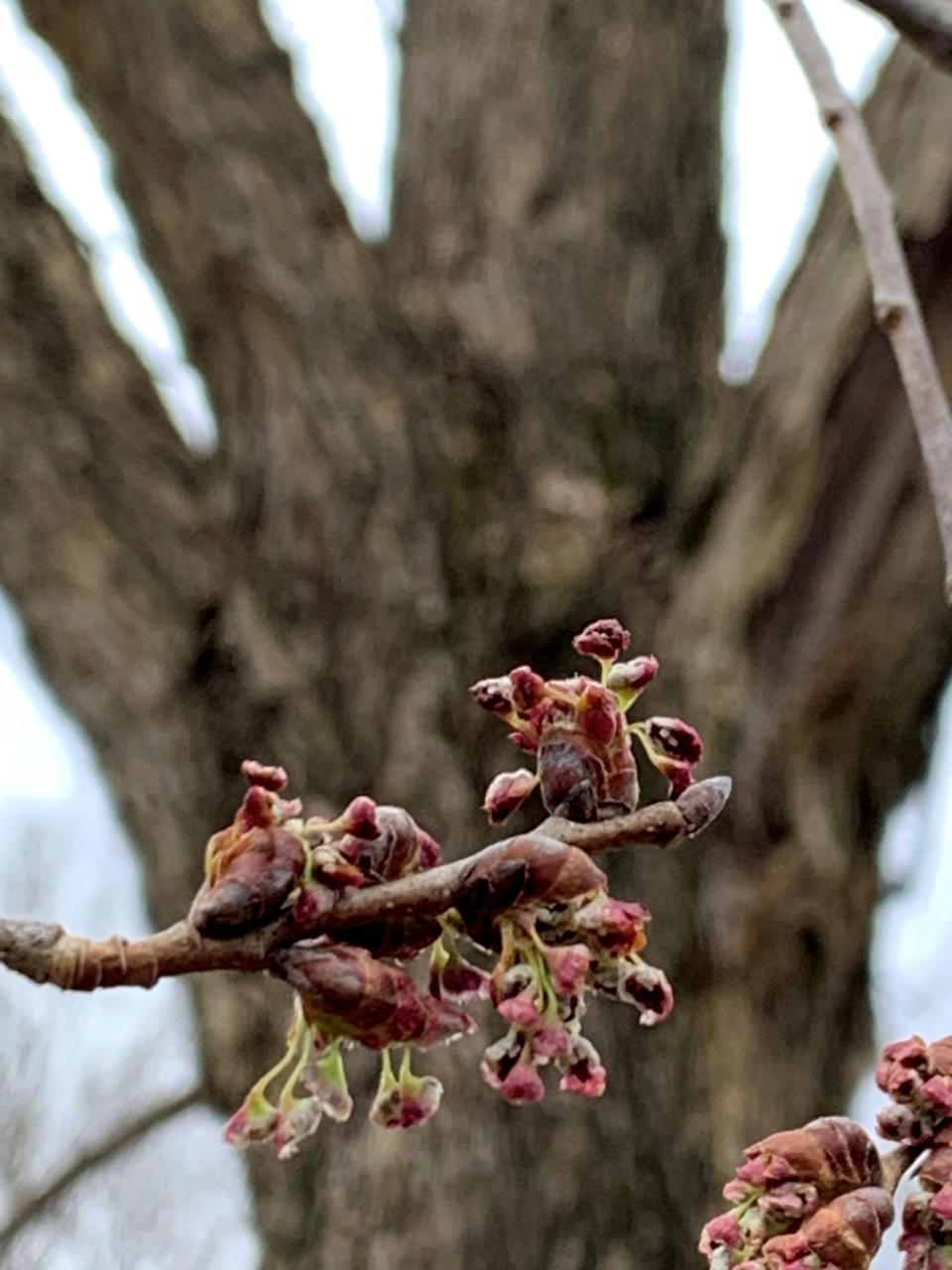So what was that dust on everyone's car in February? What weather experts discovered
It was a "perfect storm," partly formed by the graces of the early Spring-like weather. But it could have also been connected to some wild weather more than 1,000 miles away.
A light-colored dust that fell from the sky the night of Feb. 23 coated cars, outdoor furniture and roofs in the Hagerstown area and across Maryland and parts of West Virginia, leaving many to wonder: What is it ?
It was primarily observed in Eastern West Virginia, but also drifted into Washington County, particularly the southern end, officials said. The National Weather Service said people in Westminster, Md., also reported seeing it as well as some residents on Maryland's Eastern Shore.
Some worried whether it could have been the after-effects of a train derailment on Feb. 3 in East Palestine, Ohio, that spewed toxic substances into the air.
But Tom Brown, director of emergency management for Washington County, said air flows over Washington County on Feb. 23 would not have likely carried anything from East Palestine.
The Maryland Department of the Environment initially said it believed the dust was carried aloft from large dust storms in Texas and New Mexico.

Forecasters at the National Weather Services offices in Sterling, Va., weren't sure what it was, and the West Virginia Department of Environmental Protection said it was sending inspectors to collect the material and test it.
Who tested the dust?
Through testing at West Virginia University's Department of Geology and Geography and WVU's Shared Research Facility, it was determined that the dust contained high concentrations of pollen and some soil particles, according to West Virginia Agriculture Commissioner Kent Leonhardt.
Previously:'It looked like it was snowing': Search on for source of dust that coated parts of region
Leonhardt said unseasonably warm temperatures that started in February are causing trees in the region to bloom and release pollen, which is probably giving allergy sufferers fits. He said American Elm and Siberian Elm trees have been sprouting very heavy blooms.
"It’s a perfect storm of warm temperatures and heavy pollen loads," Leonhardt said in an email.
What do other agencies say?
The National Weather Service said initially it was going to contact its headquarters regarding the dust and ask if there was another agency that might be able to track it to determine what it was.
In a recent call to the NWS offices in Sterling, weather forecasters referred further questions to the Cooperative Institute for Meteorological Satellite Studies in Madison, Wis. The institute, which helps the National Weather Service and the National Oceanic and Atmospheric Administration with their operations, specializes in the advanced use of meteorological satellite data.
Steve Bachmeier, a research meteorologist at the institute, said pollen is a plausible explanation for the dust, but he's looking at Texas and New Mexico too.
"In this case there is such compelling evidence for blowing dust that it could very well have been a mixture of the two," he said.
In his previous work with the NASA Langley Research Center in Hampton, Va., Bachmeier said he studied long range transport of pollution from various parts of the world. So it's not unusual that blowing dust from New Mexico and Texas could have reached Maryland, he said.
Bachmeier said a weak cold front was passing through the state on Feb. 23, and the sinking of air typically seen behind cold fronts would have helped push the dust to the ground.
"I have seen similar events from (New Mexico and Texas) in the past. Some have coated our Upper Midwest snow cover with a brown layer that mystified the locals," he said. "Large outbreaks of blowing dust from Asia have sometimes crossed the entire Pacific Ocean."
The Texas Tribune reported perviously that the Lubbock area in late February was enduring "epic dust storms" with winds nearly 70 mph. That's usually associated with tropical storms or hurricanes, the news service said.
This article originally appeared on The Herald-Mail: February dust held pollen; Western storms not ruled out, experts say

